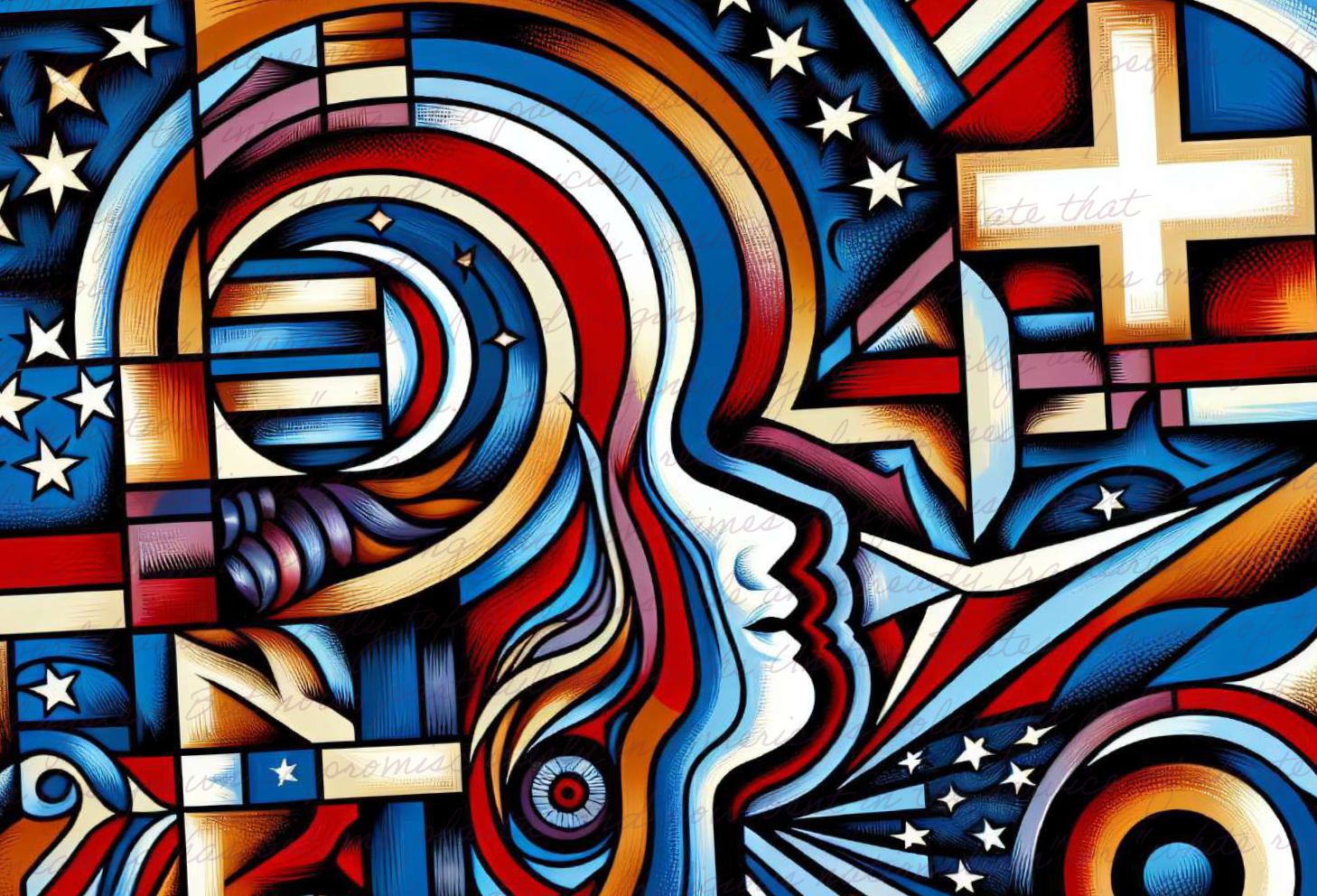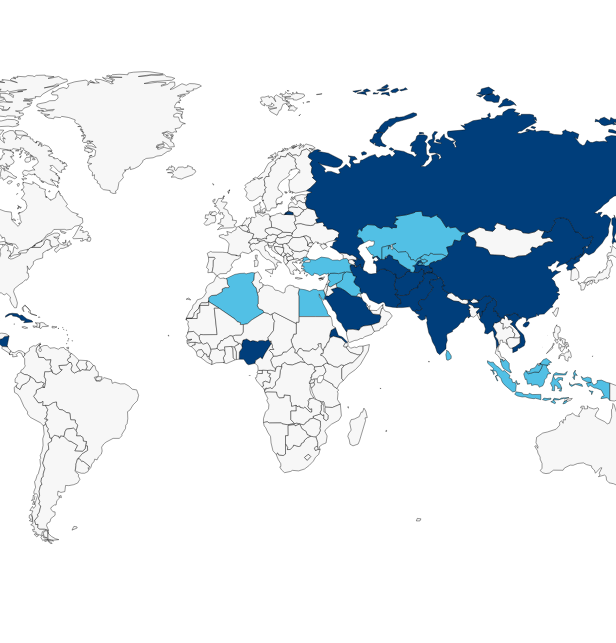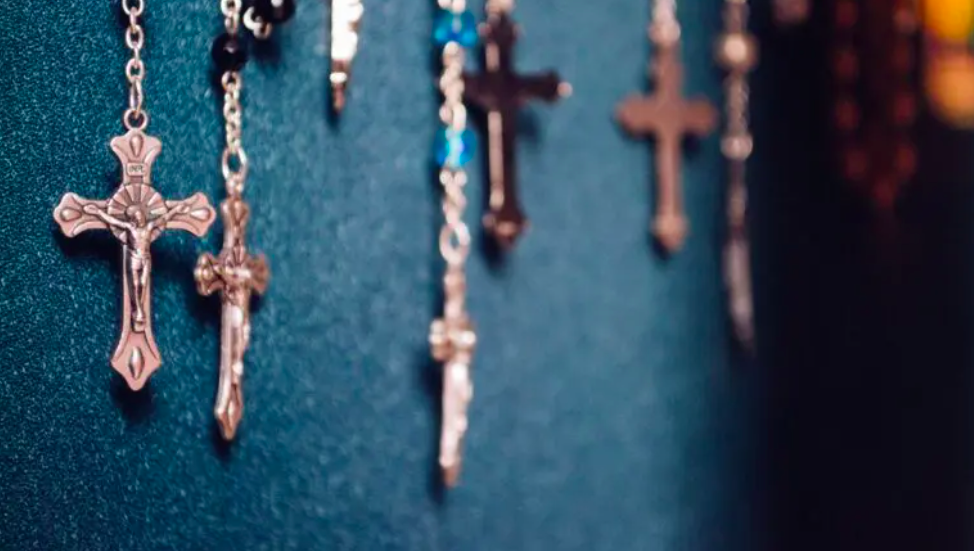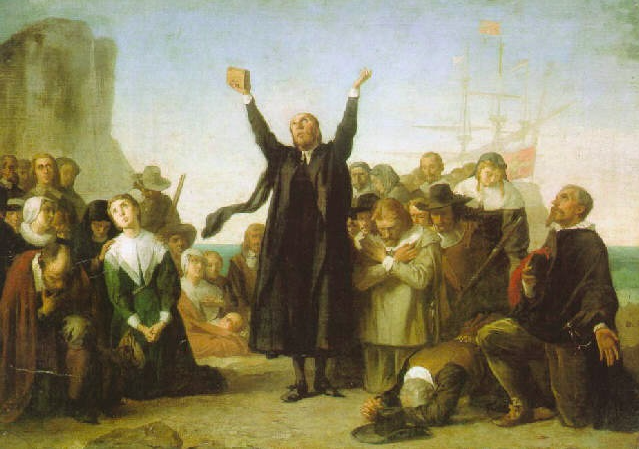Contributors to this series are asked to consider both the historical significance of recent developments in Ukraine, but also the practical implications for religious communities of the latest developments. What is the role religious communities can play in seeking to bring an end to the conflict and secure fundamental rights and freedoms, including religious freedom within a healthy denominationalism? What steps should policy makers take to promote peace and advance fundamental rights and freedoms for all in Ukraine.
This series builds on a joint RFI-USIP event hosted on October 31, 2018.
To read all posts in this series visit: Considering the Religious Dimensions of the Conflict in Ukraine
The religious situation in Ukraine is entering upon a critical stage. The situation is a three-vectored issue that involves Constantinople, Moscow, and Kyiv. The Russian Orthodox Church has always been a tool in the hands of the tsars, the commissars, and the new bare-chested star of the Kremlin. After the fall of the USSR and the ideological vacuum that this created in Russia, the Church was again pulled into an intimate relationship with the Kremlin, especially under Vladimir Putin, to offer a conservative and nationalist vision known as “the Russian world”.
The contrast with what has occurred in Ukraine is stark. From its independence in 1991 until earlier this year, no Orthodox Church had as cozy a relationship with the government. The Orthodox Christians who did not want to belong to the Moscow Patriarchate were not limited in their freedom by the government, and were free to organize their Church life as they saw fit, without government intrusion. In 1990 the “Ukrainian Exarchate of the Russian Orthodox Church” was hastily renamed the “Ukrainian Orthodox Church” and Moscow bestowed upon it a hitherto unheard-of and overtly ambiguous status, calling it “independent”, but strategically avoiding the accepted ecclesiastical terms “autocephalous” or “autonomous”. In contrast, twenty years earlier in 1970, that same Patriarchate unambiguously bestowed autocephaly (the highest level of ecclesial self-rule) on the Orthodox Church in America.
Within just a few years Orthodox Christianity in Ukraine was split into three major factions: the Ukrainian Orthodox Church of the Moscow Patriarchate (UOC-MP), the Ukrainian Orthodox Church of the Kyivan Patriarchate (UOC-KP) and the Ukrainian Autocephalous Orthodox Church (UAOC), as well as a number of very small Orthodox groupings. Moscow has labeled the latter two schismatic and devoid of grace. Following Moscow’s lead, the rest of the Orthodox world treated these Churches as illegitimate and refused communion with them. The UOC-MP thus refers to itself as “the only canonical Church”. When it comes to figuring out membership, the casual observer is easily confused, as the UOC-MP always counts parishes, monasteries, and other institutions. Consequently, membership numbers appear much larger. The UOC-KP, on the other hand, prefers to count members or percentages of the population, and thus constitutes the majority. The UAOC, nonetheless, is much smaller than these two ecclesiastical institutions.
The year 2018 turned into a breakthrough year for those Orthodox in Ukraine who simply did not want to be tied to the Moscow Patriarchate. Ecumenical Patriarch Bartholomew and the Sacred and Holy Synod of the Patriarchate of Constantinople reasserted authority over the Orthodox Church in Ukraine. It is an incontrovertible fact that Constantinople is the Mother Church of the Church of Kyiv. Even the Ukrainian Greco-Catholic Church recognizes this while acknowledging (since 1596) the leadership of the Pope of Rome. The Russian Orthodox Church claims that in 1686, jurisdiction over the Metropolia of Kyiv (which then extended through modern Ukraine, Belarus and beyond) was transferred by Constantinople to Moscow. Thus, from the perspective of Moscow, the daughter Church (Moscow, founded by missionaries from Kyiv) essentially became the mother of its own Mother Church (Kyiv). But the Ecumenical Patriarchate claims that it did not transfer jurisdiction over the Metropolia of Kyiv to Moscow in 1686. The Ecumenical Patriarchate claims it granted the Patriarch of Moscow the right to ordain the Metropolitan of Kyiv, after his election by a council of the clergy and laity. This would be done with the proviso that the Metropolitan of Kyiv was to commemorate the Patriarch of Constantinople, rather than the Patriarch of Moscow, as his superior. What quickly happened was that the Church of Moscow arrogated control over the ecclesiastical affairs of the Metropolia of Kyiv. The Muscovites had interpreted the 1654 Treaty of Pereiaslav between the Ukrainian Hetman Bohdan Khmelnytskyi and the tsar as a subjugation rather than an alliance, as well. As a result, this treaty soon began to interfere in Ukraine’s internal affairs, finally subjugating the country completely.
All of this historical information is necessary in order to make sense of what is happening in present-day Ukraine as of late 2018. In reasserting authority over Ukraine, Ecumenical Patriarch Bartholomew and his Synod also removed from the heads of the UOC-KP and the UAOC together with their Churches all ecclesiastical penalties imposed on them by Moscow, and promised to deliver a Tomos of Autocephaly (traditional Orthodox document regarding ecclesiastical independence) to a newly united Ukrainian Orthodox Church. All three Churches would be considered equally canonical and equally grace-filled. They would gather together in a Unification Council to be announced shortly, choose a primate, accept a charter, a draft of which was composed in Constantinople November 29, 2018, and that primate would be given the Tomos. Moscow claimed that Constantinople was trespassing onto its canonical territory, and broke communion with the Ecumenical Patriarchate, since it had now become schismatic by consorting with schismatics (the UOC-KP and the UAOC). This is where problems have begun to arise. Some of the hierarchs of the UOC-MP will undoubtedly participate in the Unification Council, but others will not. What will happen to them? During the July 2018 celebration of the 1030th anniversary of the Christianization of Kyivan Rus’, as well as other occasions, Ukrainian President Petro Poroshenko very publicly asserted that no one would be forced to join the newly united and autocephalous (ecclesiastically independent) Ukrainian Orthodox Church. Those who wish to continue ties with Moscow are skeptical. Having enjoyed hegemony over Orthodox Christianity in Ukraine for over 300 years, and having anathematized and reviled rivals, whether Orthodox or Greco-Catholics (who also have a claim to be one of the inheritors of the legacy of the Baptism of Rus’ in 1988), those who choose to remain affiliated with the Patriarch of Moscow, rather than the new head of the Ukrainian Orthodox Church, will have to deal with the fact that they may well become a minority Church in Ukraine. Forecasts vary as to how many UOC-MP bishops will join the new Church. The fact that some representatives of the Patriarchate of Moscow, both in Russia and Ukraine, have supported Russia’s annexation of Crimea and its adventurism in the Southeastern provinces of Luhansk and Donetsk, as well as blessing and storing the weapons of the Russian military and its separatist clients, has already turned many of the faithful Orthodox in Ukraine against them. Thus, the UOC-MP and the Moscow Patriarchate itself have been raising the alarm that right wing Ukrainian nationalists (which they conflate with members of the other two Orthodox jurisdictions) will be seizing properties by violent means. This may happen in some cases, but we are assured by the central Ukrainian government that these actions will not be tolerated, and certainly are not state-sponsored. There are voices in the government and the UOC-KP who would like to see the UOC-MP change its name to the Russian Orthodox Church, an idea the Church rejects.
It is interesting to note that the Moscow Patriarchate constantly refers to the loss of “canonical territory” and the feared loss of property, while the Ecumenical Patriarchate pastorally emphasizes bringing millions of the faithful back into the Orthodox fold and putting an end to enmity among the Orthodox in Ukraine. His Beatitude Sviatoslav, head of the Ukrainian Greco-Catholic Church, drew attention to Bartholomew’s approach in statements made during the Papal Synod on Youth in Rome this Fall.
What will be the fallout for other religious groups in Ukraine as this continues? Probably none. Perhaps a few Ukrainian Greco-Catholics will decide to join the new, united and autocephalous Orthodox Church out a sense of misguided patriotism, but I don’t expect a mass exodus. Due to their history of persecution by the national Churches of both Russia and Poland, Ukrainian Greco-Catholics are notoriously skeptical of alliances between governments and the Church that are too intimate. Neither will the small Roman Catholic Church in Ukraine get involved. Various protestant groups (for lack of a better term), especially evangelicals and pentecostals, who are openly persecuted by Donbas separatists in the name of Russian Orthodoxy, and reviled as agents of the CIA, EU, or the West in general, will probably breathe a sigh of relief and simply shake their heads at the inter-Orthodox squabbles. Jews have no dog in this fight and will probably feel no difference in this situation. Muslim Tatars constitute probably the most pro-Ukrainian minority in Ukraine, and, still hurting from Russia’s seizure of their Crimean homeland, will be happy to see overt Russian influence via their greatest soft-power tool diminish in Ukraine.
Ukraine is a multi-ethnic, religiously pluralistic country, with a long history of various religious communities living side-by-side and exerting mutual influence (with some unfortunate periods of intolerance, but always while under the rule of some foreign power). It has an amazing body called the All-Ukrainian Council of Churches and Religious Organizations that includes all the major Christian Churches, along with Muslims, and Jews, and fosters dialogue and cooperation among various religious institutions. This council spoke unanimously in the most dangerous moments of Russian aggression in Crimea and threats of separatism after the Revolution of Dignity. This council is Ukraine’s best hope for both the short and long term. If only the United States or Canada could have an organization of this kind!
The greatest threat for Ukraine and all of its religious groups is Putin’s dream of reconstituting a Russian Empire. The specter of a full-scale invasion of Ukraine is not just alarmism or some calculation by an unpopular Ukrainian President. No country that has been fighting a nearly five year hybrid war, which has lost a very significant and strategic piece of its territory, would be foolish enough to think that Russia does not have the will to destabilize and ultimately undermine Ukraine. That constitutes real and present danger for all the religious groups in Ukraine. The country needs to be left alone. Its people will sort these things out.
Rt. Rev. Mitred Protopresbyter Andriy Chirovsky, S.Th.D. is Founder, Metropolitan Andrey Sheptytsky Institute of Eastern Christian Studies and Full Professor in the Faculty of Theology, University of St. Michael’s College in the University of Toronto.
All views and opinions presented in this essay are solely those of the author and publication on Cornerstone does not represent an endorsement or agreement from the Religious Freedom Institute or its leadership.
THE RFI BLOG

Myths of Religious Nationalism in America and Abroad

France’s Olympic Hijab Ban Violates International Law And Exacerbates Tensions

RFI Briefs USCIRF on Lessons from 25 Years of U.S. Designating Religious Freedom Violators

Thought Police: Protecting the People from Prayer

A Religious “Delaware”: Establishing a State Haven for Religious Corporations
CORNERSTONE FORUM

Challenges to Religious Freedom in Iraq and the Critical Need for Action

Public Bioethics & the Failure of Expressive Individualism

Religious Liberty in American Higher Education

Scotland’s Kate Forbes and the March of Secularism


